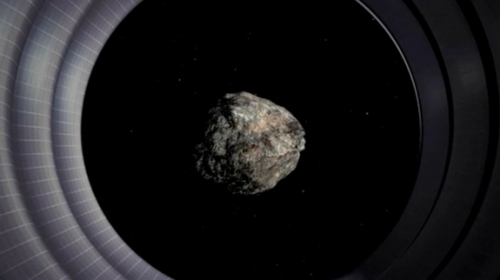NASA’s Asteroid Retrieval Mission May Lack a Viable Target
A Future in Space Operations presentation earlier this week by Dan Adamo, which can be found here, highlights a potential serious problem with NASA’s proposed asteroid capture mission. The presentation focuses on a “V” plot which shows a range of Near Earth Asteroids grouped into three different classes by their orbital characteristics. Some NEAs falling within in the V meet the basic guidelines as outlined in the NEO HSF Accessible Targets Study (HNATS) for a crewed mission. The guidelines call for the asteroid to be in a certain size range, be accessible with a certain minimal velocity change to get there and back, as well as fall within the a few degrees of Earth’s own orbital plane. Finally, the asteroid’s orbits must place them within reach of Earth’s within the time frame of the proposal, by 2030. There are a number of known NEAs which might otherwise be ideal, but which are on long orbits which carry them too far from Earth for consideration.
As it turns out, even though the Asteroid Retrieval Mission (ARM) relieves NASA of the difficulties of an extended duration manned mission to travel to an asteroid and study it, the new criteria imposed; a close Earth approach, diameter of 7 – 10 meters, and a mass of around 500 metric tons, appears to reduce the number of possible targets to zero. Meaning that as of this moment, NASA does not have a target that aligns with the plan to capture and return to it Cis-Lunar orbit in time to neatly coincide with an early mission for the Orion spacecraft. Oops.
As the author goes on to point out, there are other options, but they bring other problems. Still working with known asteroids, the field of possible visits could be expanded by changing the mission from capturing a smallish free flying asteroid, to instead “landing” on a body much too large to return, gathering samples, possibly large ones from loosely accreted materials, and bringing them back to the Earth Moon system. Besides even further diminishing the popular appeal of a proposal which has failed to generate much enthusiasm to begin with, this option runs the risk of targeting an asteroid which does not readily yield pieces of itself. An even more embarrassing prospect is targeting an object whose orbital characteristics are not perfectly understood, and missing it entirely.
On the other hand, NASA could instead seek to expand the field of available candidates by searching for more NEAs in the first place. This option has the decided benefit of helping to identify and characterize the much smaller group of Earth crossing asteroids which pose a potential threat to all of us. This of course, is the mission of the B 612 Foundation and its Sentinel project, so there is clear room for collaboration. The problem here is one of time, in that there isn’t enough of it.
The asteroid retrieval plan is conceived around highly efficient, but painfully slow electric propulsion to reach a target and then gently direct it our way, a process which will take several years flight time. Any new start, pre-cursor mission to fund, design, build, launch and operate a telescope to search for better targets would need to be gearing up, or already underway to allow time for actual retrieval mission, and that isn’t happening.



1 Comment on "NASA’s Asteroid Retrieval Mission May Lack a Viable Target"
Trackback | Comments RSS Feed
Inbound Links